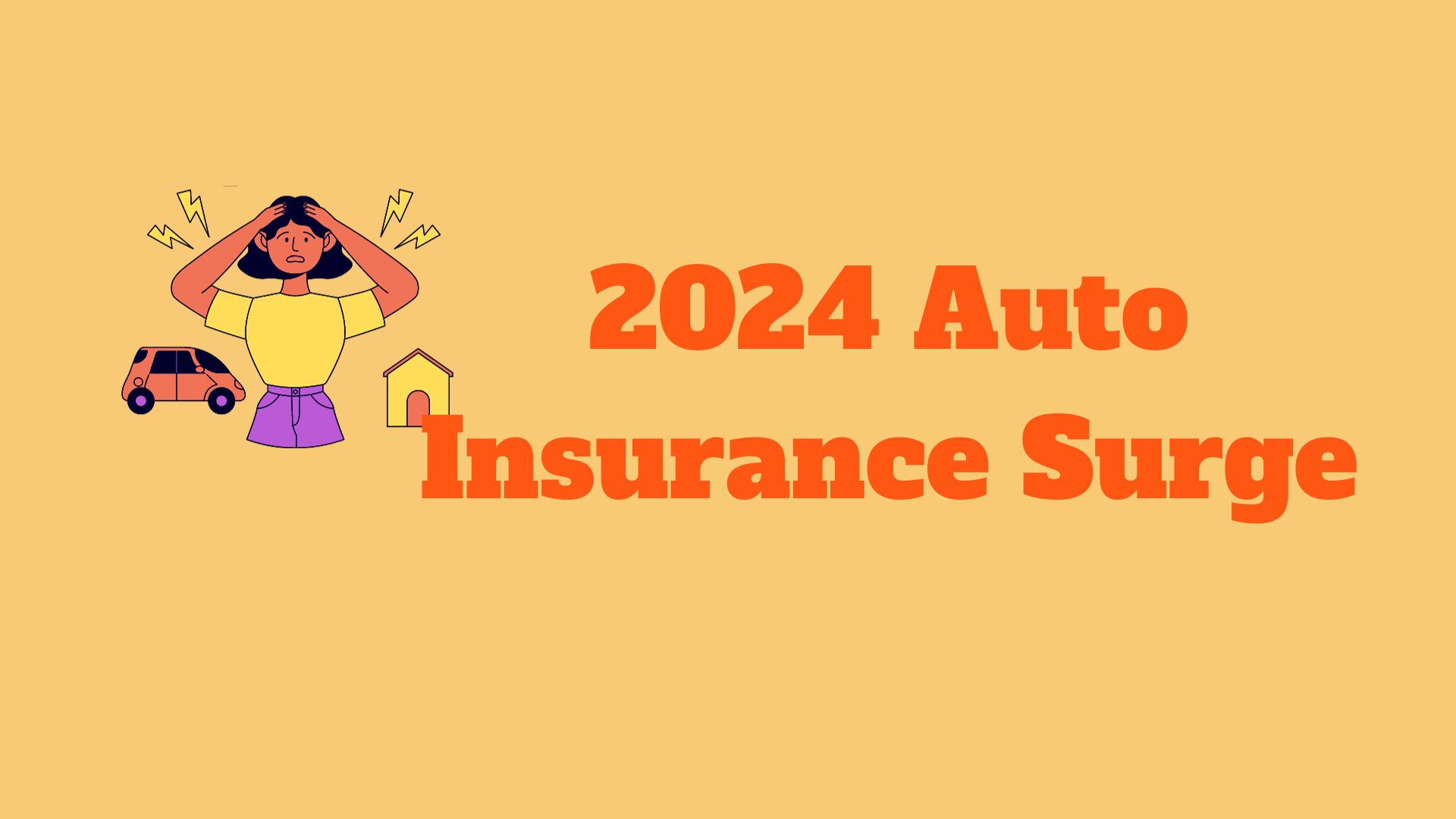As we navigate the intricate terrain of 2024, American motorists are preparing for another unwelcome revelation – projections indicate a substantial uptick of 12.6% in auto insurance premiums. This follows an 11.2% escalation in 2023, showcasing a troubling pattern that compounds the challenges for individuals already contending with the escalating costs of daily life.
Why the Spur? Brace for a Turbulent Journey
Numerous factors are coalescing to contribute to this anticipated surge in auto insurance premiums:
- Escalating Repair Expenses: The modernization of vehicles, compounded by disruptions in the supply chain and inflationary pressures, has propelled the costs associated with vehicle repairs to unprecedented heights. This surge translates into augmented payouts for insurers, necessitating an elevation in premiums to maintain financial equilibrium.
- More Intense Weather Phenomena: The heightened frequency of weather-related events, a consequence of climate change, such as hurricanes, floods, and wildfires, is resulting in an increase in claims for car damages. This surge in claims, in turn, amplifies the trajectory of insurance costs.
- Distracted Driving and Heightened Risk Profiles: Despite strides in technology, roadways continue to pose hazards. Distracted driving, fueled by factors like mobile phone usage, coupled with an overall uptick in risky driving behaviors, contributes to a surge in accidents and subsequently, higher claims costs.
The Sting at the Fueling Station: Impact on Motorists
For the multitude of Americans reliant on their vehicles for daily life, the projected 12.6% increase translates into an average spike of $220 annually in insurance premiums. This added financial burden arrives at a precarious juncture, particularly for households already grappling with inflationary pressures and economic strains.
State-by-State Analysis: Navigate the Accelerator or Apply the Brakes?
The repercussions of the premium surge exhibit non-uniformity across the nation. States such as Nevada, Washington, Arizona, and Connecticut are poised to grapple with notably steeper increases, with Nevada taking the lead with an anticipated surge of 28%. In contrast, states like Vermont and Rhode Island are projected to undergo more restrained increases in the 5-7% range.
Navigating the Uneven Path: Guidance for Motorists
While confronting the inevitability of escalating costs, proactive measures are available for drivers to alleviate the impact:
- Explore Alternatives: Loyalty may not always yield favorable outcomes in the insurance realm. Evaluate quotes from diverse insurance providers to secure the most advantageous deal.
- Elevate Your Deductible: Increasing the deductible has the potential to curtail your premium. However, weigh the potential savings against your capacity to handle a heightened upfront cost in the event of an accident.
- Evaluate Your Coverage: Regularly scrutinize your policy to ensure optimal coverage without unnecessary add-ons.
- Drive Prudently: The most efficacious approach to restrain premiums is by averting accidents. Cultivate safe driving habits, eschew distractions, and adhere to traffic regulations.
The Path Ahead: What to Anticipate
The auto insurance sector confronts a confluence of challenges, rendering it challenging to prognosticate when the surge in premiums might abate. Anticipations suggest ongoing increments in the near future, albeit conceivably at a decelerated rate compared to the prevailing 12.6%.
For motorists, the directive is clear: prepare for an intricate journey in 2024. Through proactive measures, informed decisions, and safe driving practices, individuals can navigate the ascent in costs and retain control over their car insurance expenditures.
What Looms on the Horizon: A Thorough Examination of 2024
Per industry analysts, the consumer price index (CPI) reveals a staggering 19.2% surge in auto insurance prices over the past year, outpacing general inflation rates and surpassing the inflation rate across most significant spending categories.
The aftermath of the pandemic, coupled with escalated risky driving behavior, has precipitated a surge in claims and more severe claims, contributing to the spike in auto insurance expenses. Despite a general ease in inflation, the delay in obtaining approvals for rate increases from state regulators has prolonged the impact on consumers.
“Allstate, for instance, secured auto insurance rate hikes in New York (14.6%), California (30%), and New Jersey (20%) that came into effect last month,” remarks Sean Scaturro, advice director at USAA.
As per a December report from AM Best, personal auto insurance companies incurred underwriting losses of $33.1 billion in 2022, with results continuing to decline in the first half of 2023. The average cost per claim has surged to $11,102, marking an 11% increase in a year, intensifying the pressure on insurance companies to pass on these costs to consumers.
How Much Will Auto Insurance Costs Ascend This Year?
In the approaching year, analysts anticipate fewer substantial premium hikes compared to recent periods. However, a surge may still loom for certain drivers. Laura Longero, executive editor of CarInsurance.com, posits a conservative estimate of approximately a 10% increase in 2024. While this may be less severe than the hikes experienced in 2022 or 2023, it remains a noteworthy burden for consumers already shelling out an average of $1,765 annually for full-coverage insurance.
According to Jerry, an insurance shopping app, auto premiums have surged by 43% in the past three years, with no indications of insurers easing up on rate increases. By mid-2024, most insurance providers are anticipated to have established appropriate pricing, and premium costs may begin to stabilize.
“As inflation subsides and insurers witness approvals for rate increases starting to accrue, loss ratios will decline, ushering in a period of enhanced price stability for consumers,” asserts Josh Damico, vice president of insurance operations at Jerry. Until that juncture, drivers are urged to stay well-informed, make judicious choices, and drive cautiously as they navigate the unpredictable and demanding road ahead.
